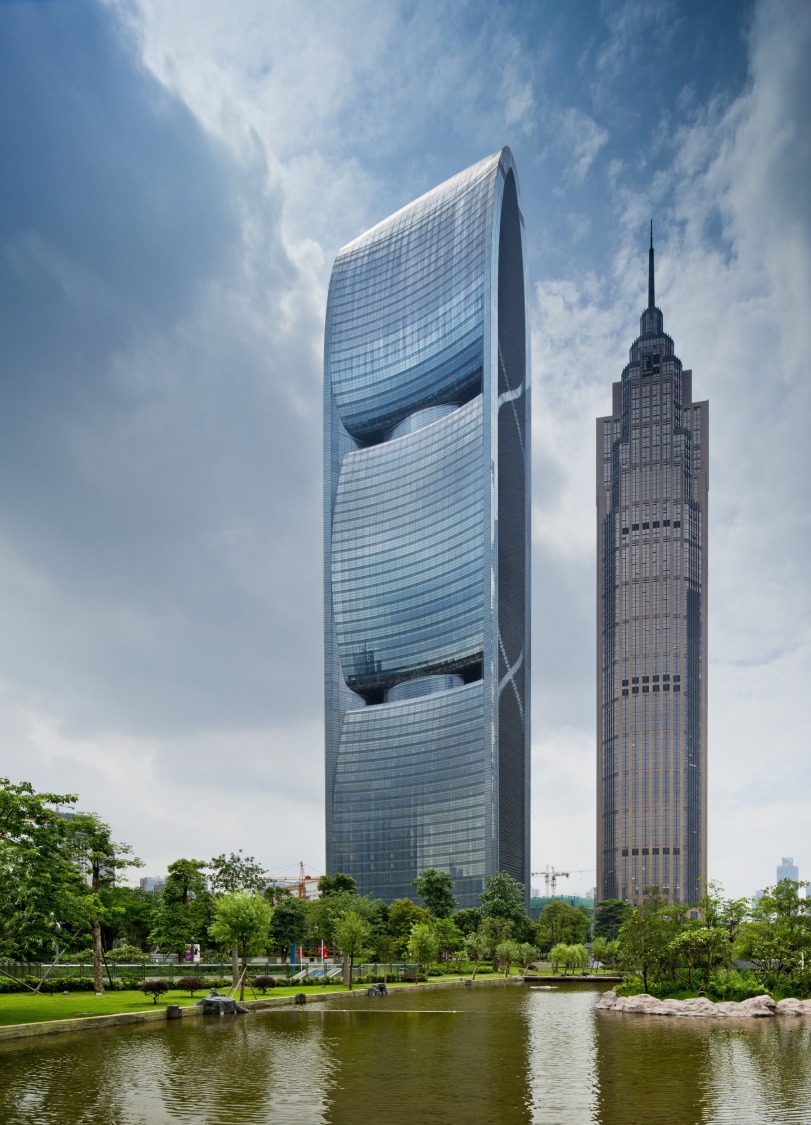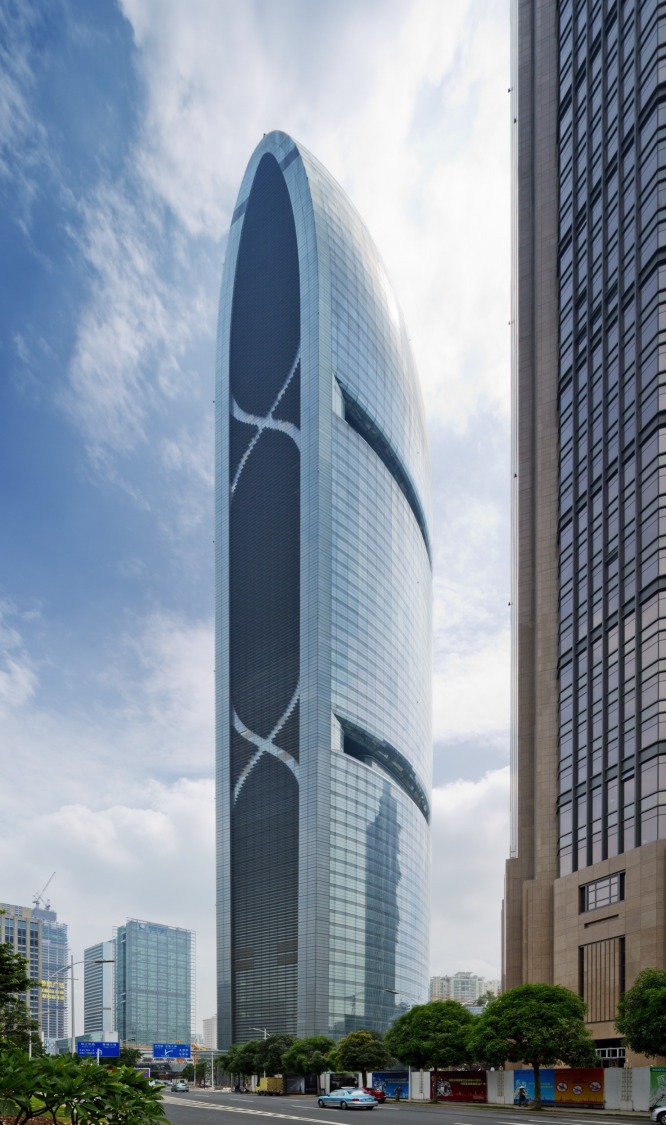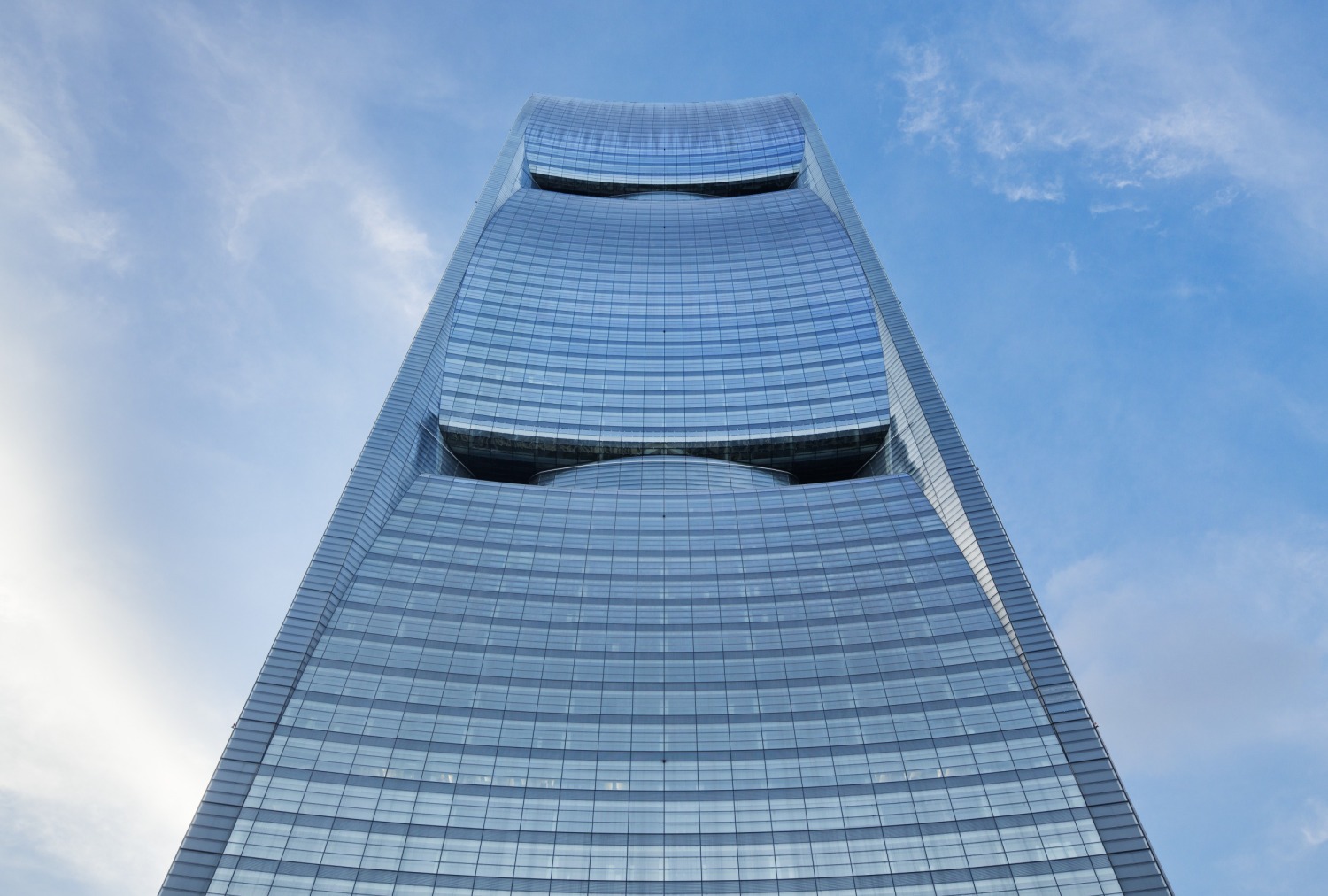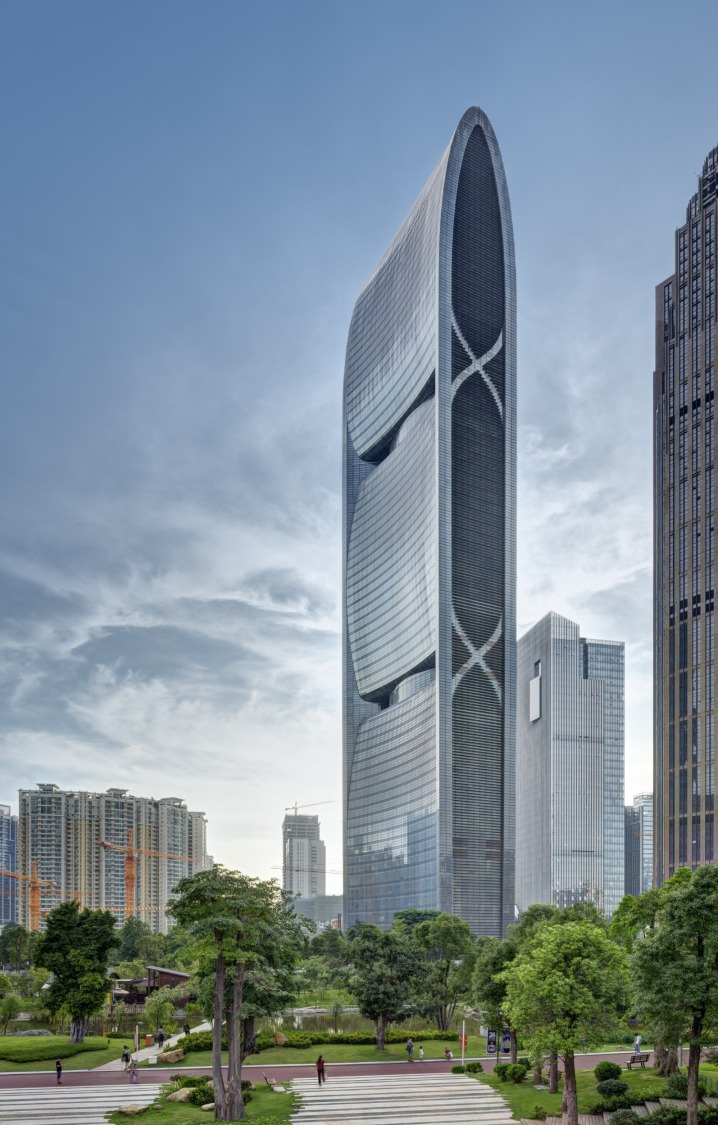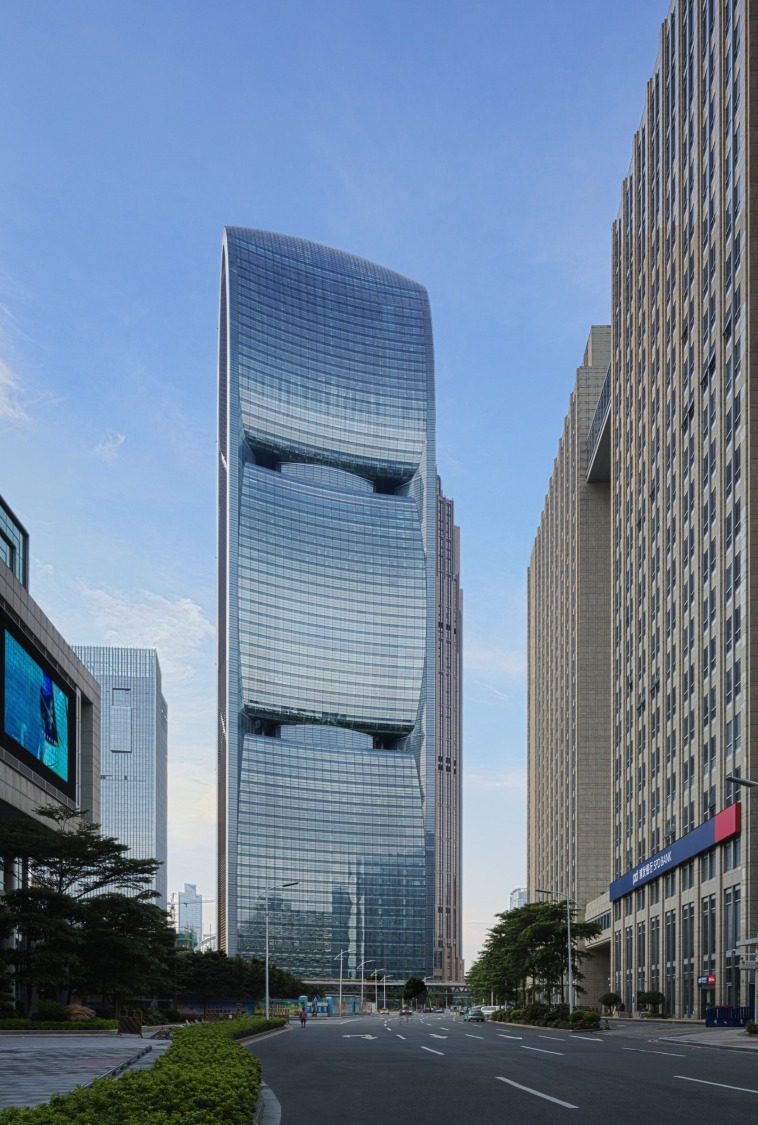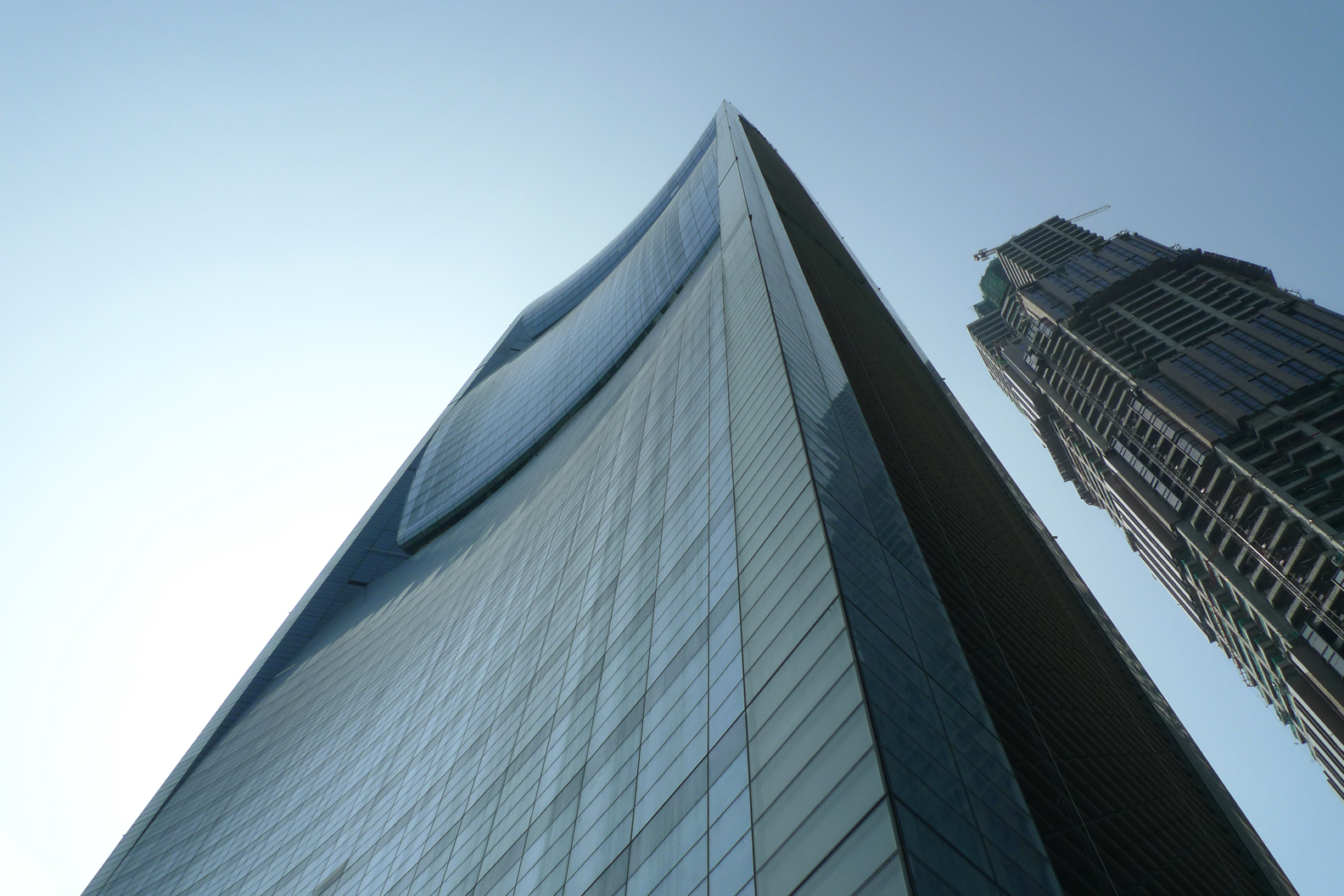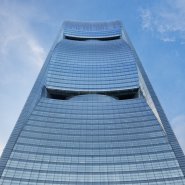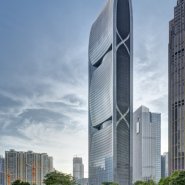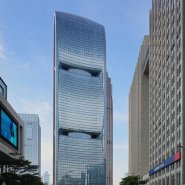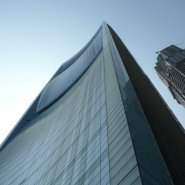Pearl River Tower
Pearl River Tower in Guangzhou, China represents a new kind of building: a skyscraper formed to work symbiotically with the natural environment. The project was designed to be the world’s first supertall tower that produces most of the energy it consumes.
Pearl River Tower represents a true symbol of progress for the 21st century: a self-sustaining, environmentally intelligent building that is a stunning new icon for the region. Every element was designed to optimize the building’s energy and sustainability performance. The unique shape was derived from the behavior of the natural elements on the site and was optimized to local solar and wind patterns, harnessing the energy of these resources and utilizing this natural power to sustain the building. Wind is funneled down the vertical face of the tower toward a series of energy generating wind turbines and photovoltaic panels in the building’s skin absorb and retain solar energy.
The two sets of wind turbines are integrated directly into the building and located at each mechanical floor. These turbines serve to generate power that is fed to the mechanical equipment with minimal losses. By adding curvature to the double wall facade, the entire building acts as an air intake to the turbines, maximizing the velocity and the potential energy rendered from the system. The energy created by the turbines is used immediately or stored in batteries for later use. Additional energy comes from a geothermal heat sink that is utilized throughout the building. The intent of this system is to reduce the electrical and water energy consumption associated with the facilities cooling system.
Typical HVAC cooling systems use cooling towers to remove all the heat energy from the building and reject the heat to the outdoors. This process requires large quantities of fan energy and, with evaporative type tower, large volumes of water are consumed by the system. Pearl River Tower's HVAC equipment passes the cooling tower water through embedded tubes, within the building’s caissons, prior delivering it to the cooling towers. Using the energy of the earth, the amount of fan energy and water consumption will be reduced greatly. The system will also have the capability of “recharging” the energy in the earth, during hours when the water, within the cooling tower, falls bellows the natural temperature in the ground. This reduces energy consumption on the following day.
In addition to its superior performance, the tower also represents the pinnacle of quality for a world-class headquarters facility. The client desired a building that would represent and enhance their position as a global leader and an active participant in the sustainable design movement. It was equally important that the building provide the highest quality of workspace for the company’s staff. The tower was designed to satisfy all of these requirements, resulting in a building that represents the intersection between performance and function.
